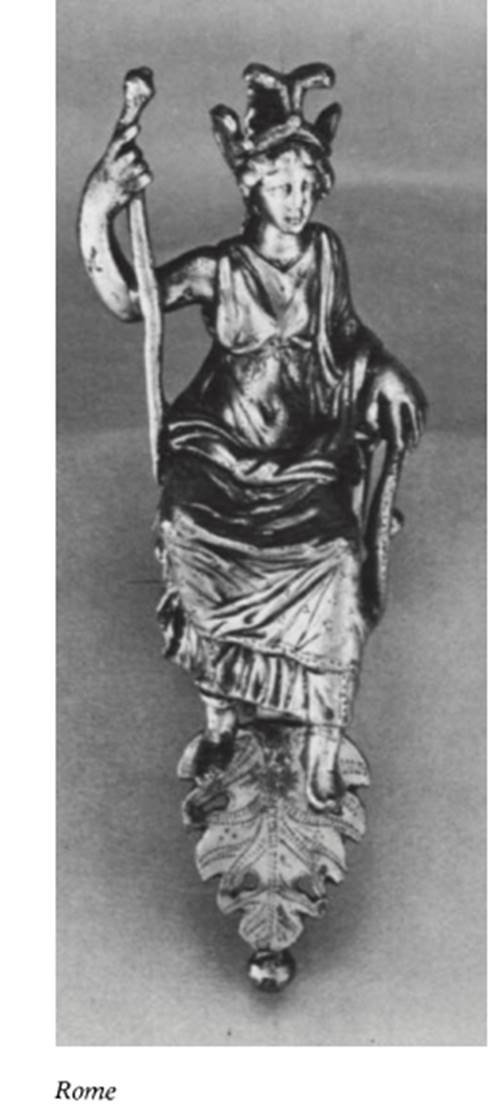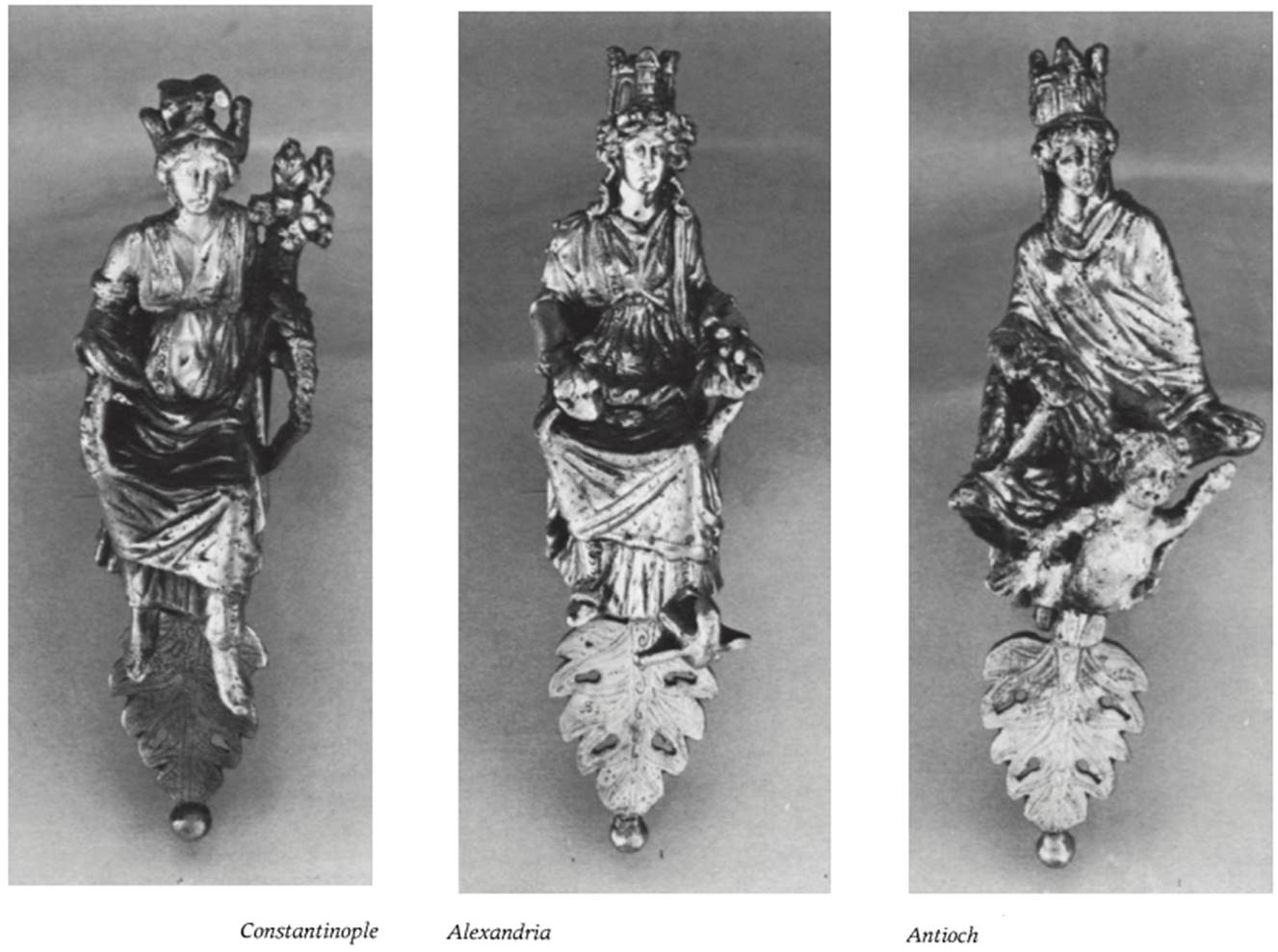Four statuettes of Tyches. Rome, mid-4th century. Silver with silver gilt
Each of the four statuettes is cast in one piece with a heavy rectangular socket. They served as elaborate furniture ornaments attached, it has been suggested, to a sedes gestatoria. They represent major cities of the late empire: Rome, Constantinople, Alexandria, and Antioch. The ornaments were attached by means of a pin which passed through aligned holes in the socket and the original fitting, although only one piece preserves the original pin and its attached chain. A large leaf is hinged below each figure. The four share an elongated canon of proportions and a basic facial type; they are plastically rendered, with draperies that reveal underlying postures; and all are detailed with decorative engraving and surface stippling. Gilding is consistently used on draperies, attributes, headdresses, hair, and hinged ornaments and ungilded silver on flesh, and small details such as footgear.


Three of the figures (Rome, Constantinople, and Alexandria) closely resemble one another. They are frontal in a seated contrapposto posture; each wears a simple tunic girdled below the breasts and a mantle. Antioch is seated on a rock outcropping, with right leg crossed over left and with upper torso inclined to her right. Below her legs, a nude youth in a stylized swimming posture personifies the River Orontes. She wears a voluminous mantle that covers the entire body and a tunic that shows only over the exposed right leg. The distinct treatment of this figure reflects that of the Tyche of Antioch, a now lost work of the Greek sculptor Eutychides commissioned in 296 b.c.
Antioch wears a mural crown and carries fruits and sheaves of grain in her right hand. Alexandria also wears a mural crown above a wreath of flowers and trailing ribbons and carries fruits and sheaves in both hands. The figure rests her forward left foot on a ship's prow, an indication of a port city. The attributes of these two figures refer to aspects of topography and to abundance. The statuette of Constantinople also bears fruits and grains and carries a patera for ritual libations, but these references are combined with a helmet indicative of military and political power. Rome is represented, according to a centuries-old tradition, as a military figure with attributes of a helmet, a shield, and a staff or spear.
Discovered in Rome in 1793 along with many other silver objects known collectively as the Esquiline treasure, the statuettes are stylistically related to major pieces of the treasure (nos. 309, 310), which are in turn linked to such late fourth-century finds as the Cor bridge lanx (no. 110) and the treasure of Traprain Law (no. 389). The great size of the Esquiline silver find is indicative of the wealth of its original owners. The iconography of these ornaments suggests the owners were politically powerful as well. Bibliography: Dalton, 1901, nos. 332-335, pi. xx; Toynbee, 1947, p. 144, pis. V, VI; Dohrn, 1960, no. 12, pi. 3.
Date added: 2025-08-31; views: 80;
